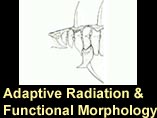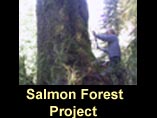Adaptive Radiation & Functional Morphology:
A major focus of my evolutionary research is directed towards understanding potential functionality of phenotypic variability within and among populations.
A: Early studies (1970-1974) examined the ecological genetics of intertidal snails (Littorina mariae) which included evidence for microspatial matching between shell colour and background, mimicry between snails and spirorbid tubeworms, and influences of crab predation on shell morphology (R1979, 1981, 1982, 1989). One of the interesting observations in this study was that the interpretation of gastropod shell color required attention to the spatial geometry of predator and prey. The bright yellow coloration of the littorine snails on the brown seaweeds was exceptionally conspicuous when viewed from the human standpoint but was highly camouflaged when viewed from the hunting positions of the intertidal fish, Blennius pholis, which hunted from beneath the algal fronds. These data indicated that the extent of phenotypic discreteness of the different color morphs among populations was coupled to the extent of substrate heterogeneity and microsubstrate discreteness.
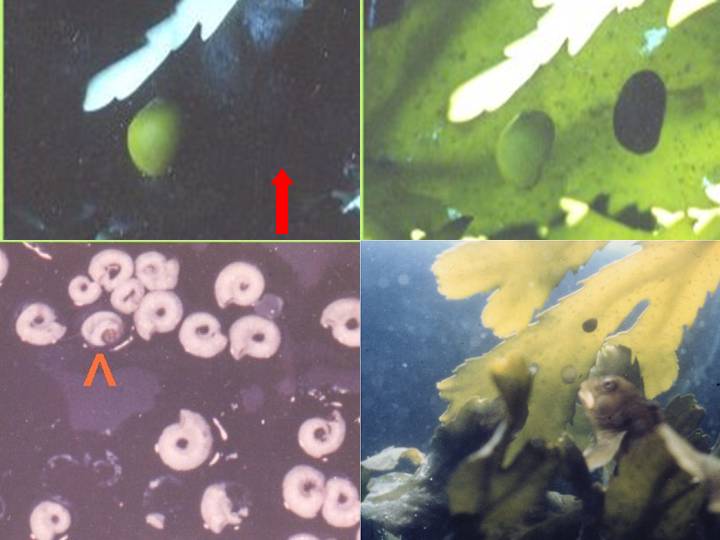
B:
Studies of threespine stickleback
(Gasterosteus aculeatus ) on coastal archipelago of
British Columbia
including Haida Gwaii (Queen Charlotte Islands) and the Estevan Group,
initially undertaken with Dr. G. E. Moodie from 1967 to 1970,
resumed in
1975 and have continued to the present. These investigations
have
examined the functional morphology of bony plates, spines and
nuptial
colour variation among 160 allopatric lake populations of stickleback
from the
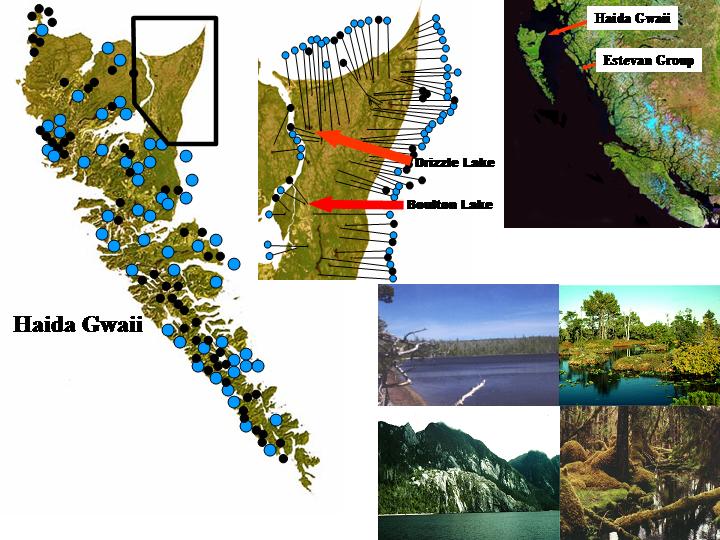
C:
I have focussed on identifying
causes of mortality in stickleback within and among the populations in
an
effort to identify selective landscapes relevant to defense morphology.
The
longest series of observations took place at
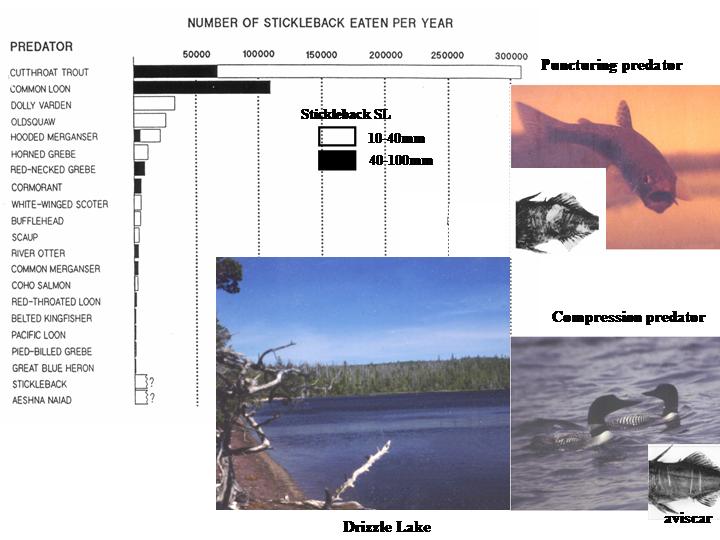
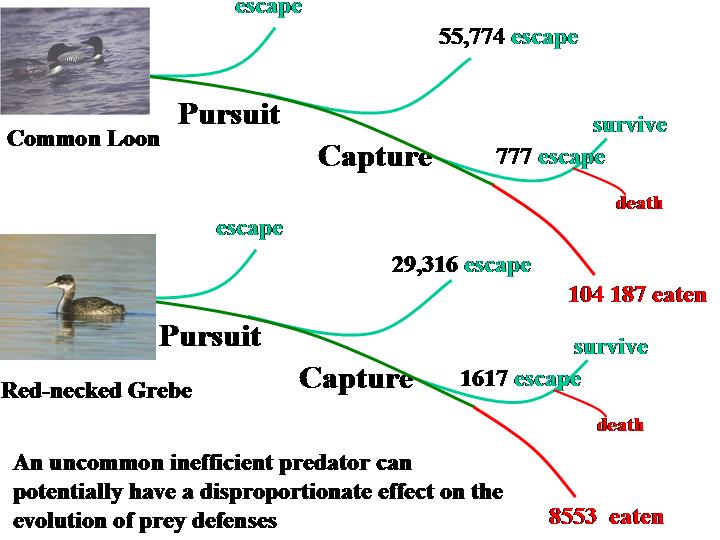
D: A
series of four papers (R 1983; R 1992b; R 1994; R 2000) have provided
experimental and field evidence for the functional morphology of the
spine–plate defense apparatus of Gasterosteus.
These traits which
exhibit major geographical variation have been the focus of
evolutionary
studies for over the last 50 years and continue to be extensively
investigated
in evolutionary studies (review in
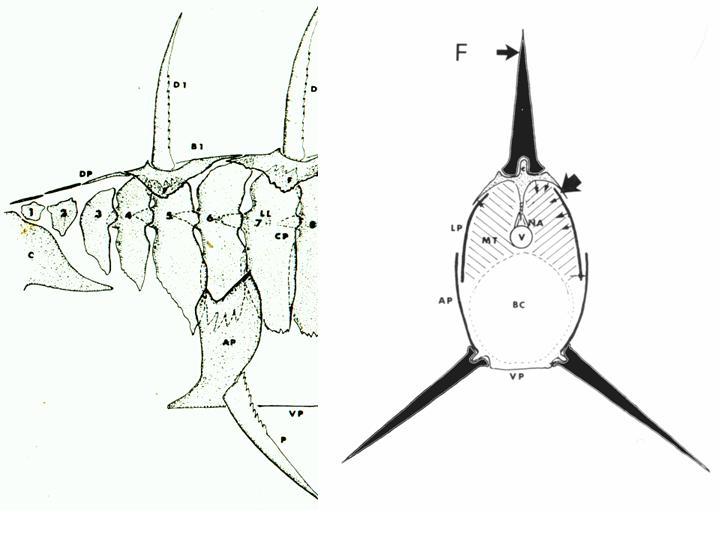

E: Data
obtained from long term field studies at
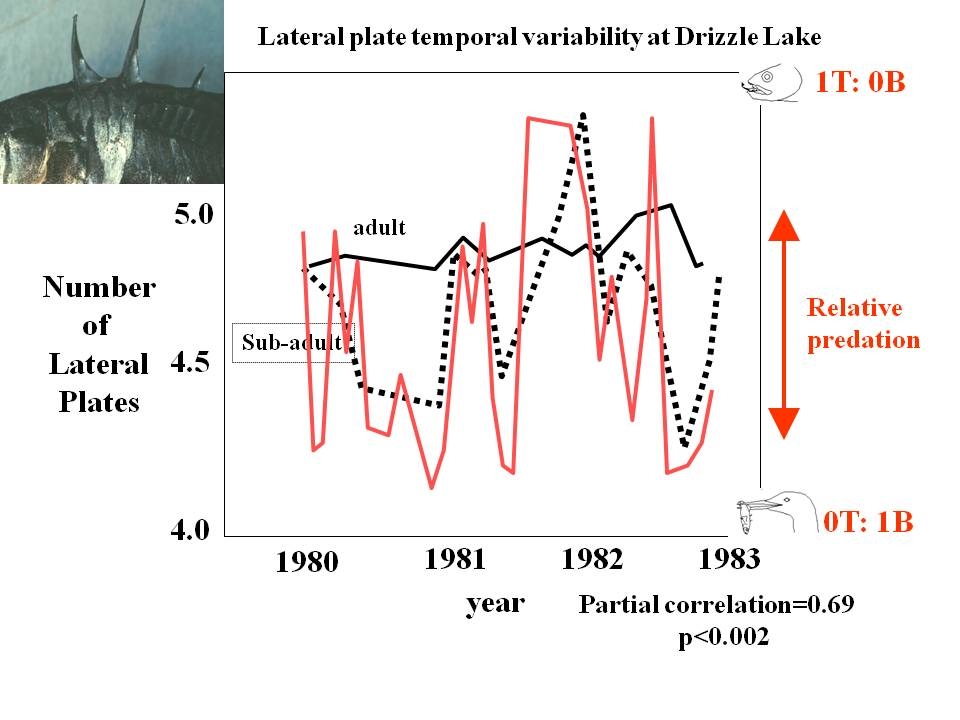
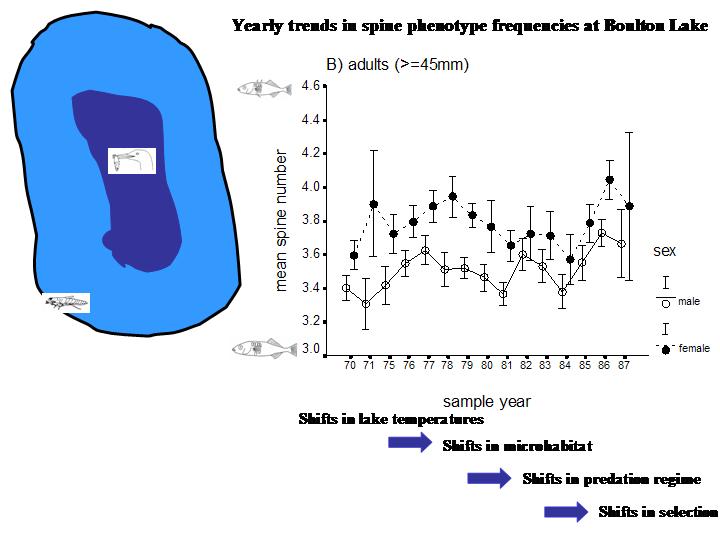
F: Based
on a long standing interest (Moodie and Reimchen 1976,
Systematic Zoology
25:49-61) in the evolutionary and ecological aspects of fluctuating and
directional asymmetry in the defense apparatus of stickleback, my
students and
I have been able to provide useful field tests of hypotheses coupling
asymmetry
with fitness reduction using relative parasitism as a proxy for
fitness
(R1997, Bergstrom and R 2000, 2002, 2003, 2005, R and Nosil
2001a, 2001b). Asymmetries are least frequent among lateral plates that
buttress the dorsal and pelvic spines yet the asymmetries are
unexpectedly
common reaching 50% in some populations even with high levels of
vertebrate
predation. We suspect that rather than relaxed selection, the
high
frequencies of asymmetries may comprise adaptive and functional
responses to
behavioral laterality in predators. Examination of bird-induced
injuries on
stickleback from
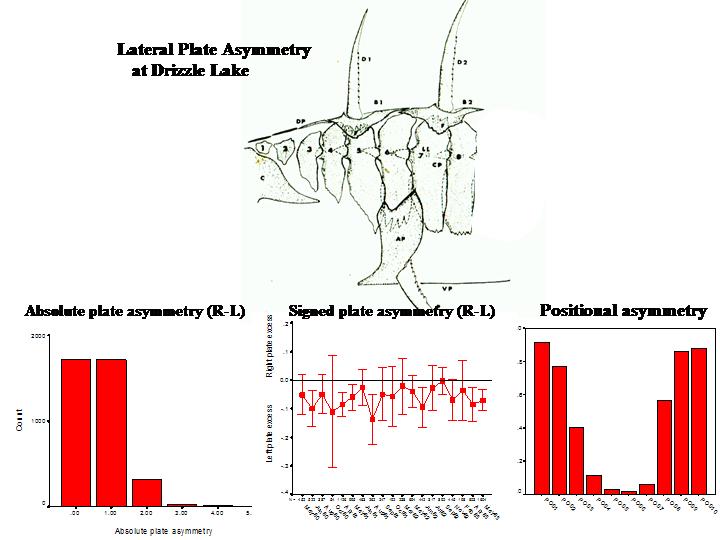
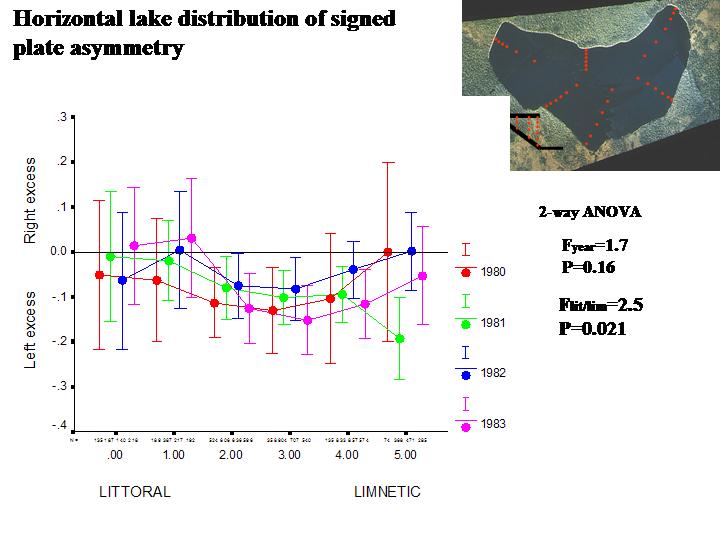
The following
figure shows the incidence of
right side versus left side predator-induced pelvic fractures on
stickleback
from
while females have a preponderance of right side fractures in
limnetic
but not in littoral habitats.

G:
The perspectives emerging from the
investigations of Gasterosteus from Haida Gwaii
are that the population
differentiation in defense morphology is largely driven by differences
in
predation regime, predator efficiencies and physical attributes of the
habitat.
Site-specific differences in the proportions of puncturing, compression
and
grappling piscivores alter the selection on pursuit versus manipulation
adaptations of the stickleback . Water color, which varies from deeply
stained
to clear, influences the reaction distance between predator and prey
which
further shifts search, pursuit and manipulation failures among the
predator
species (see refs R 1992b, 1994, 2000). These results appear
to contrast
with our recent investigations of insular Gasterosteus populations
from
the Banks- Estevan archipelago on the coastal mainland where water
chemistry
and lake morphometry are important predictors of trophic and defense
morphology
(Nosil and R 2005). The biophysicial attributes of the lakes are also
associated
with hydrodynamic aspects of body shape which is highly variable among
the
populations (Spoljaric and Reimchen
2007, 2008, 2011).
The multiple replicated responses among the allopatric populations
emphasize
the deterministic processes in structuring population attributes.
General graphical model for the evolution of defense structures in Gasterosteus
incorporating predator
assemblage and predator-prey reaction distance derived from water
spectra in
stained and bluewater lakes (Reimchen et al. 2013)
H:
The morphological and genomic differentiation of the Haida
Gwaii stickleback, comprising over
100 endemic population, is ongoing.
Reimchen, Bergstrom & Nosil 2013 . Evolutionary Ecology Research 15: 241–269.
"Natural selection and the adaptive radiation of Haida Gwaii stickleback. "
"Population genomics of parallel phenotypic evolution in stickleback across stream-lake ecological transitions."
Deagle, BE., FC. Jones, DM. Absher, DM Kingsley & TE Reimchen. 2013. Mol. Ecol. 22,:1917–1932.
" Phylogeography and adaptation genetics of stickleback from the Haida Gwaii archipelago revealed using genome-wide
single nucleotide polymorphism genotyping"
Reimchen, TE, D. Steeves, & CA Bergstrom. 2016. Evolutionary Ecology Research 17: 459-485.
"Sex matters for defense and trophic traits of threespine stickleback."
Marques, DA , JS Taylor, FC Jone, F. Di Palma, D M. Kingsley & TE Reimchen. 2017. PLOS Biology, in press.
" Convergent evolution of SWS2 opsin facilitates adaptive radiation of threespine stickleback into different light environments. "
I :This ecological and evolutionary research have lead to several associated projects including parasitology of Gasterosteus (R1982, 1997, R & Nosil 2001b), dinoflagellate life history on endemic unarmoured Gasterosteus (R & Buckland-Nicks 1990, Buckland-Nicks et al. 1990, 1995, 1996), molecular phylogeny of Haida Gwaii endemics (Byun et al. 1997, 1999, R & B 2005), foraging and reproductive behaviour of Red-throated Loon (R & Douglas 1980, 1984, 1985, Douglas and R 1988a,b; see sonograms, audio clips, video clips, pdfs and links on home page for Sheila Douglas), foraging behaviour of bears (R 1998a,b, 2000, Klinka and R 2002) and wolves (Darimont and Reimchen 2002; Darimont et al. 2003, a functional analyses of the 'vestigial' adipose fin in bony fishes (Reimchen and Temple 2004; Temple and Reimchen 2008; Buckland-Nicks et al. 2011), biophysical inventories of aquatic habitats on Haida Gwaii (see Scientific Reports), nutrient cycling between marine and coastal oldgrowth forests (R 1994, 2000, see Salmon Forest) and the ecological and evolutionary role of humans as superpredators (Darimont et al. 2015) .
......see full list of publications on Home Page
Funding: Thanks to Natural
Sciences and
Engineering Research Council of Canada (NRC Operating Grant
#2354 to T
Reimchen)

